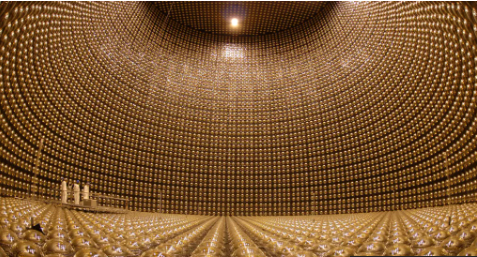Scientists will travel 1,500 meters below the surface, in three huge underground caves searching for an answer to the question
In a laboratory hidden above the fog of South Dakota forests, scientists are looking for a response to one of the greatest questions in science: Why is there our universe?
The Japanese scientists are looking to answer the same question.
The current theory of how it was created cannot explain the existence of the planets, the stars and the galaxies we see around us. That is why both teams make detectors studying a subcodal particle called neutrin in the hope of finding answers.
International cooperation under US leadership hopes that The answer is deep in the subsoil, In the so -called “Deep Underground Neutrino Experiment” (Dune).
Scientists will travel 1,500 meters below the surface, in three huge underground caves. The scale is such that the construction workshops and their bulldozers look like small plastic toys.
The scientific director of this facility, Dr. Jaret Heise, describes the giant caves as “cathedrals of science”.
Dr. Heise has been involved in the construction of these caves in Sanford’s underground research facilities for almost ten years. There they isolate the noise and radiation.
“We are ready to build the detector who will change our understanding of the universe with organs that will be developed by the cooperation of more than 1,400 scientists from 35 countries, who are willing to answer the question of why we exist,” says Dr. Heise.
When the universe was created, two types of particles were created: the material – of which the stars, the planets and all that surround us – and, in equal quantities, the antimatter, The exact opposite of matter.
Theoretically, the two should have been interdependent, leaving only a great eruption of energy. And yet, where we are here – as matter.
Scientists believe that the answer to understanding why matter defeated – and why we exist – is in the study of a particle called neutrin and the antimatter that is his opposite, the Antinitrino. During their research they will launch beams of both types of particles from the basements to Illinois to the detectors in southern Dakota, 800 miles away. This is because as they travel, neutrons and antitrines change a little. Scientists want to know if these changes are different for neutrons and antitrines. If so this could lead them to the answer to the Because matter and antimatter are not interdependent.
At the same time, Japanese scientists use glittering Golden Globes to seek the same answers. Scientists make the hyper-k – which will be a bigger and better version of their existing neutrinos detector, super-k.
The team, under the leadership of the Japanesewill be ready to activate the neutrino beam In less than three years, Many years earlier than the American project. Like Dune, Hyper-K is an international cooperation. Imperial College’s Mark Scott in London believes that his team is in an advantage to make one of the biggest discoveries ever made about the origin of the universe.
However, Dr. Linda Cremonesi, at Queen Mary University in London, who works for the Dune project, argues that getting there first may not give the team led by the Japanese the full picture of what is really going on.
The race may have begun, but the first results are expected in at least a few years, so the question exactly what happened at the beginning of the year to bring us to existence remains a mystery – for now.
Source :Skai
I am Terrance Carlson, author at News Bulletin 247. I mostly cover technology news and I have been working in this field for a long time. I have a lot of experience and I am highly knowledgeable in this area. I am a very reliable source of information and I always make sure to provide accurate news to my readers.











